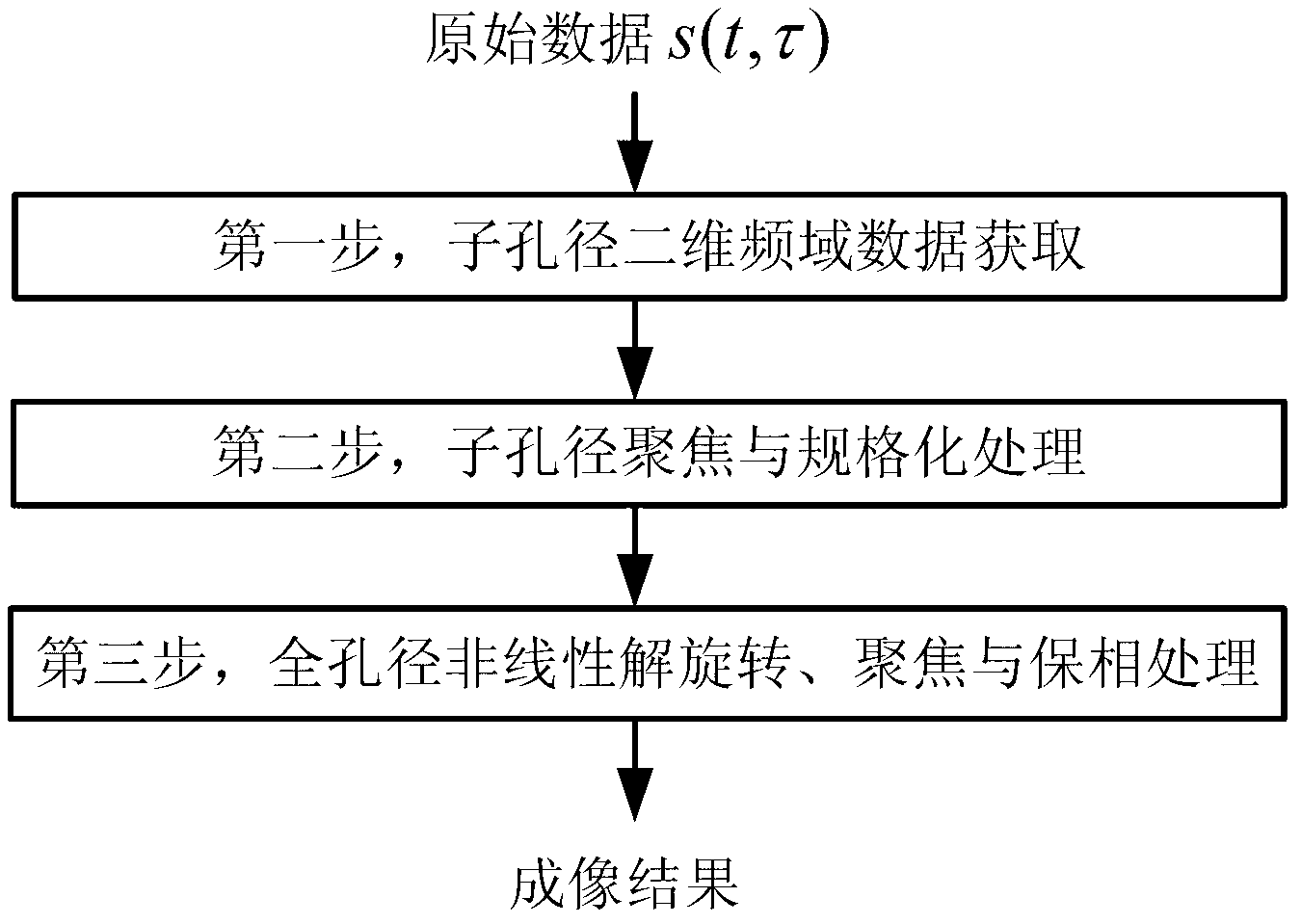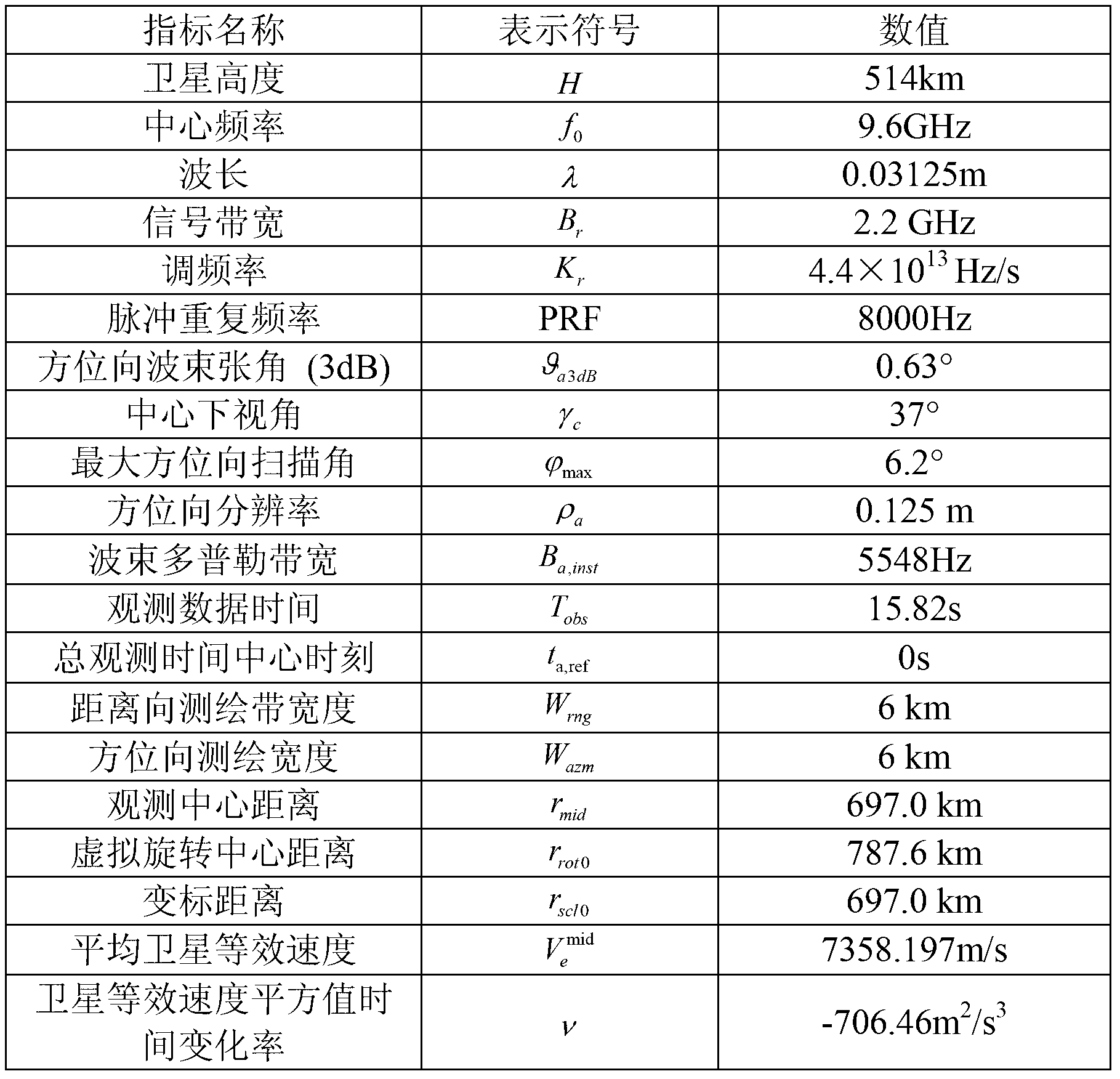Spaceborne ultrahigh-resolution sliding bunching SAR (synthetic aperture radar) imaging method
An ultra-high-resolution, sliding beam-focusing technology, which is used in the reflection/re-radiation of radio waves, the use of re-radiation, measurement devices, etc. Problems such as quality decline
- Summary
- Abstract
- Description
- Claims
- Application Information
AI Technical Summary
Problems solved by technology
Method used
Image
Examples
Embodiment Construction
[0056] The ultra-high resolution sliding spotlight SAR imaging method provided by the present invention will be described in detail below with reference to the accompanying drawings.
[0057] figure 1 It is a flow chart of ultra-high resolution sliding spotlight SAR imaging processing provided by the present invention. The whole process is divided into three steps. The first step is the acquisition of sub-aperture two-dimensional frequency domain data: after dividing the sub-aperture, the data of each sub-aperture is transformed to the two-dimensional frequency domain; the second step, sub-aperture focusing and normalization processing: completing the focusing processing and The distance and orientation are standardized. Step 3: Full-aperture nonlinear de-rotation, focusing and phase-preserving processing: After the sub-aperture data processed in the previous step is merged into full-aperture data, the third-order nonlinear frequency modulation de-rotation processing, full-aper...
PUM
 Login to View More
Login to View More Abstract
Description
Claims
Application Information
 Login to View More
Login to View More - R&D
- Intellectual Property
- Life Sciences
- Materials
- Tech Scout
- Unparalleled Data Quality
- Higher Quality Content
- 60% Fewer Hallucinations
Browse by: Latest US Patents, China's latest patents, Technical Efficacy Thesaurus, Application Domain, Technology Topic, Popular Technical Reports.
© 2025 PatSnap. All rights reserved.Legal|Privacy policy|Modern Slavery Act Transparency Statement|Sitemap|About US| Contact US: help@patsnap.com



